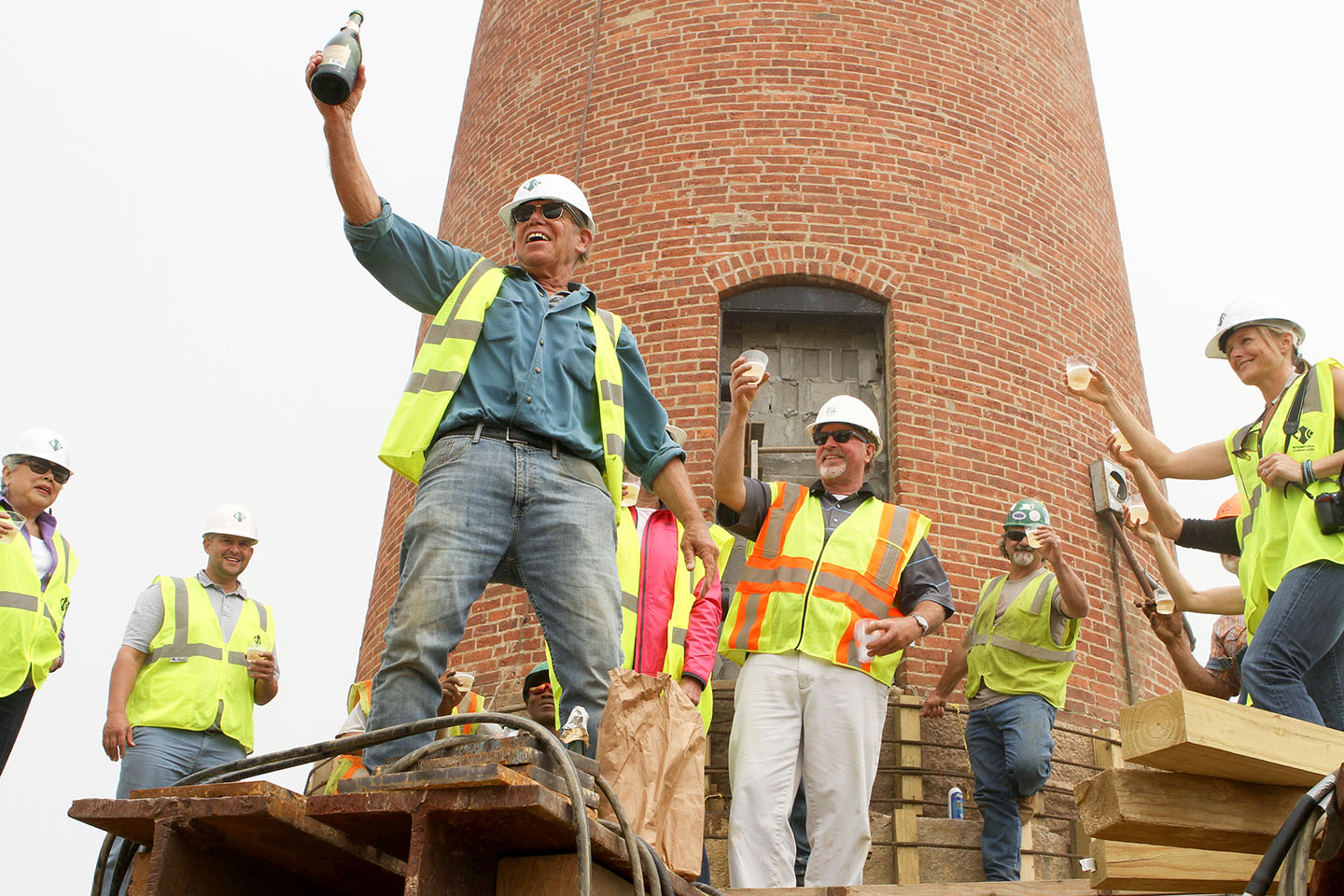After two and a half years of planning, it took only three days to move the lighthouse back from the cliffside brink.

The Island sentinel, safe and sound.Photo by Drew Kinsman.
On Saturday, the Gay Head Light reached its final stop on a 129-foot journey back from the site it had occupied since 1844, and which after more than a century of erosion was precariously close to the edge of the cliff.
After two and a half years of planning, fundraising, and many sleepless nights for those most intimately involved with the project to move the iconic structure, and three days of movement foot by foot along a steel track, the lighthouse was safe. The journey began on Thursday when workers with International Chimney Corp. and Expert House Movers began to move the historic beacon, while a crowd that included Island residents, visitors, and reporters gathered to watch.

Len Butler, building committee chairman, flanked by the men and women who moved the lighthouse, toasts the occasion. Photo by Liz Witham.
The building, which weighs in at 400 tons, traveled along metal I-beams on a path chosen for both its elevation and for the stability of the clay. Project managers said they hope the new location will be stable for another 150 years.
Ahead of schedule, at 11:10 am Saturday morning, it was time to celebrate.
As a crowd of onlookers gathered, project leader Lenny Butler of Aquinnah popped the cork on a bottle of champagne, and smashed it against the lighthouse to the cheers of the crowd.
“Those three days during the move, I almost felt like I was in a dream state,” Mr. Butler said in a telephone conversation. “I was literally two feet off the ground the whole time.”
The lighthouse now rests on its granite foundation on a grid of steel beams above a concrete slab platform. The next step, Mr. Butler said, is to build a foundation to fill what is a six-foot gap between the bottom of the lighthouse and the slab.
Bricklayers will lay solid concrete blocks in between the support beams. Once the blocks have picked up the load, the beams will be removed and the remaining gaps filled in.
